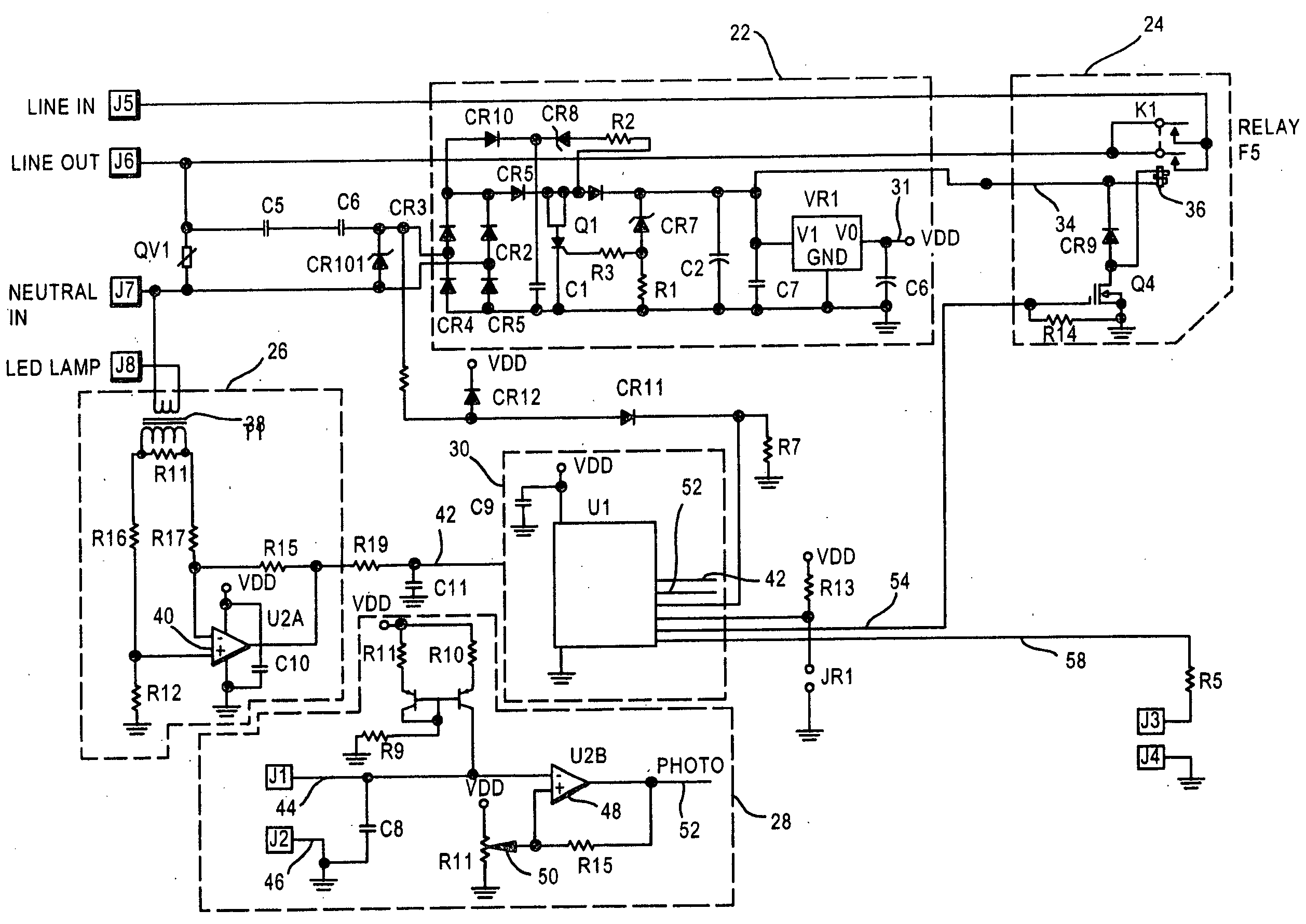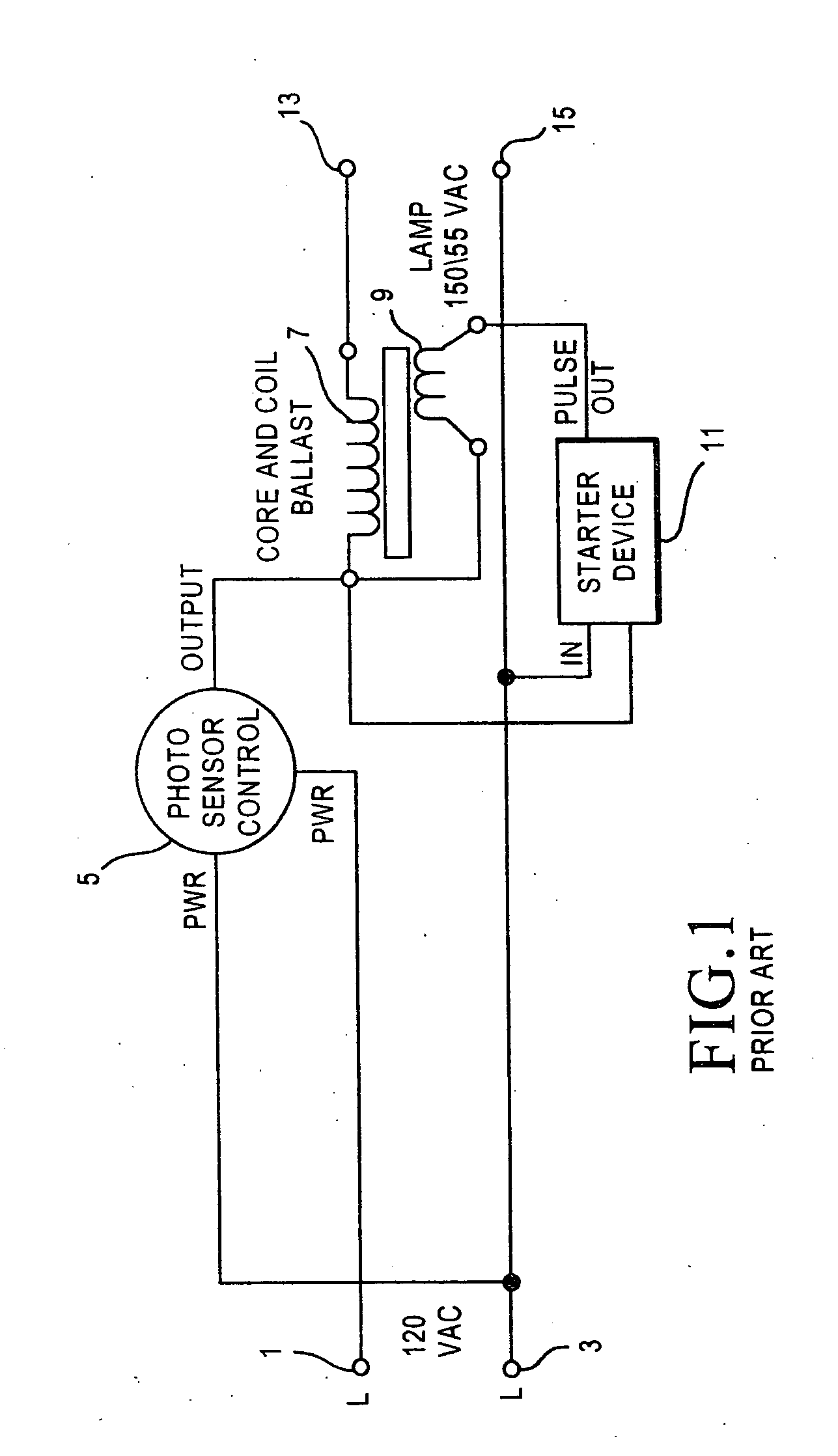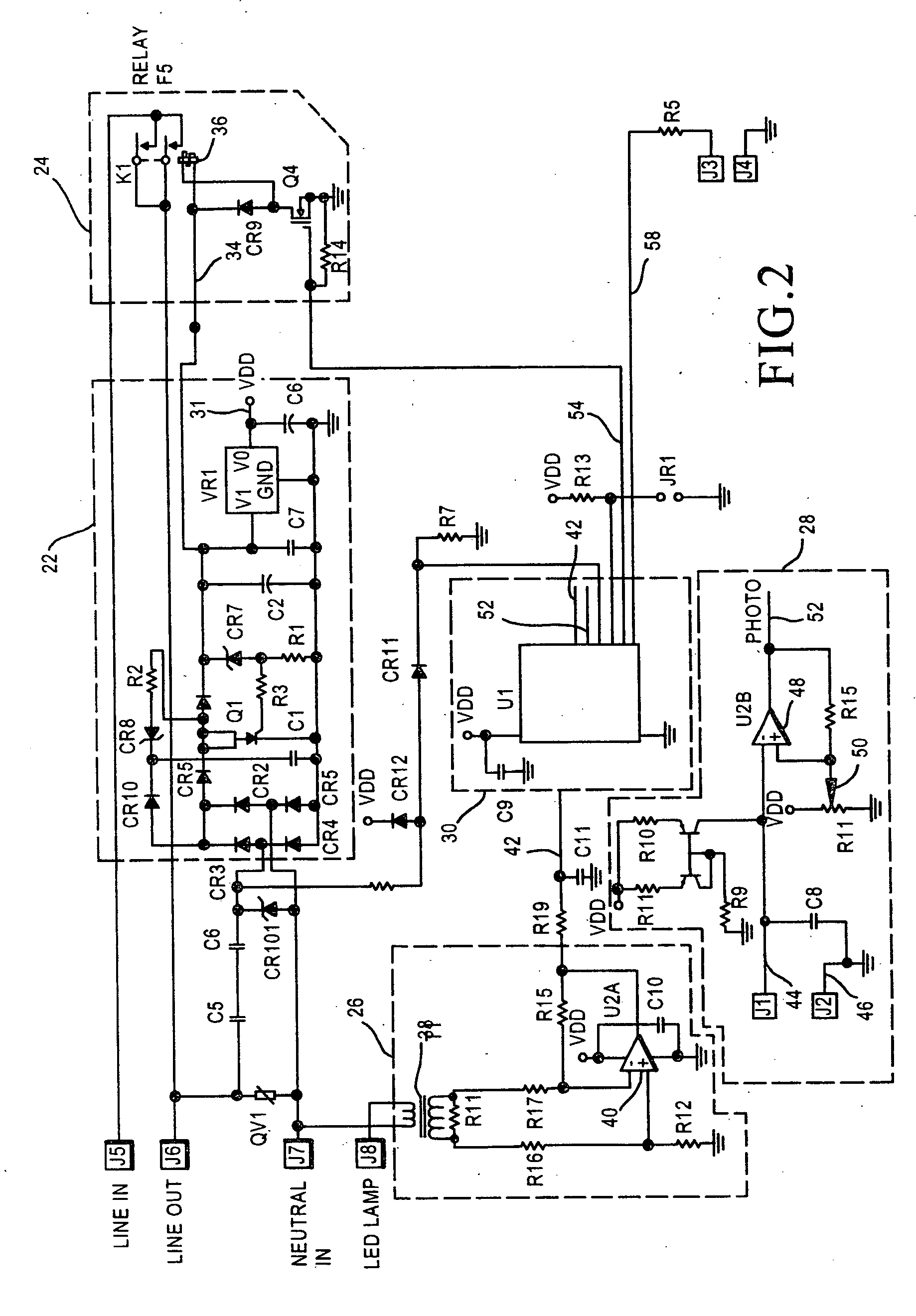Anti-cycling control system for luminaires
a control system and luminaire technology, applied in the field of electric control, can solve the problems of cycling not always easy to detect and correct, the lamp voltage cannot maintain a continuous arc, and the event of failure, so as to reduce the stress
- Summary
- Abstract
- Description
- Claims
- Application Information
AI Technical Summary
Benefits of technology
Problems solved by technology
Method used
Image
Examples
Embodiment Construction
[0030] The present invention provide means through which maintenance costs may be reduced for high intensity discharge streetlights, such as luminaires incorporating high pressure sodium lamps, as compared to the current maintenance costs resulting from current maintenance practices. In addition to reduced maintenance costs, energy savings may be achieved. Such reduction in power consumption is desirable not only for the economic benefit, but also because, to the extent fossil fuels are used to produce the electricity, the saving in power consumption results in a reduction in greenhouse gas output and reduction of other pollution. For example, based on estimated averages of luminaire power consumption of 150 watts, an energy cost of US$0.75 per kilowatt hour and 11.3 hours of operation per day, a 10% reduction in energy consumption could reduce electric power use by 1.73 billion kilowatt hours per year in the U.S. alone. Savings of 30% and 40% could produce annual savings on the ord...
PUM
 Login to View More
Login to View More Abstract
Description
Claims
Application Information
 Login to View More
Login to View More - R&D
- Intellectual Property
- Life Sciences
- Materials
- Tech Scout
- Unparalleled Data Quality
- Higher Quality Content
- 60% Fewer Hallucinations
Browse by: Latest US Patents, China's latest patents, Technical Efficacy Thesaurus, Application Domain, Technology Topic, Popular Technical Reports.
© 2025 PatSnap. All rights reserved.Legal|Privacy policy|Modern Slavery Act Transparency Statement|Sitemap|About US| Contact US: help@patsnap.com



